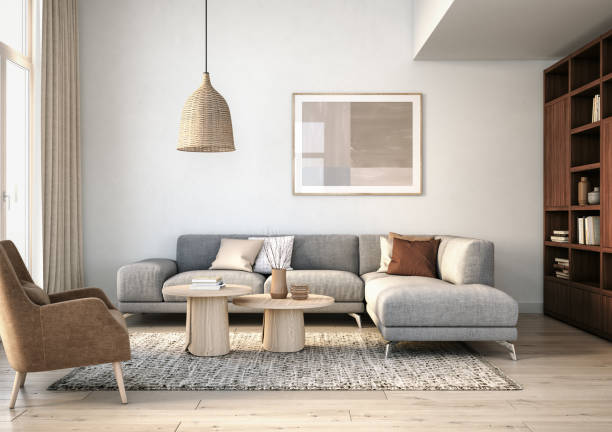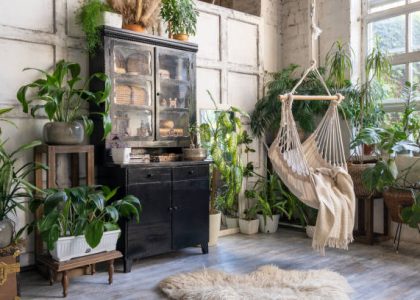In the realm of interior design, trends come and go with the seasons. One such trend that has taken the home decor world by storm is the resurgence of multi-colored plants. These vibrant botanicals inject a burst of color into any living space, elevating the ambiance and adding a touch of whimsy to indoor gardens. From variegated leaves to flowers in every hue of the rainbow, multi-colored plants have become a must-have for those looking to infuse their homes with personality and style.
But while these eye-catching plants may be aesthetically pleasing, many plant enthusiasts find themselves wondering: how do you keep them alive and thriving? With a bit of knowledge and care, maintaining multi-colored plants can be a rewarding experience. Here’s everything you need to know to ensure your botanical beauties flourish in your home:
Understanding Multi-Colored Plants
Before diving into care tips, it’s essential to understand what makes multi-colored plants so special. These plants feature leaves or flowers that exhibit more than one color, often in striking patterns or variegations. The presence of different pigments, such as chlorophyll, carotenoids, and anthocyanins, contributes to their diverse hues.
Variegation, the term used to describe the multicolored patterns on leaves, occurs due to a mutation in the plant’s genetic makeup. This mutation results in areas of the leaf lacking chlorophyll, which is responsible for the green color, leading to patches of white, yellow, pink, or red.
Care Tips for Multi-Colored Plants
- Light Requirements: Like their green counterparts, multi-colored plants require adequate light to thrive. However, their variegated leaves are often more sensitive to direct sunlight. Opt for bright, indirect light to prevent scorching or fading of the vibrant colors. East or west-facing windows are ideal spots for most multi-colored plants.
- Watering: Proper watering is crucial for the health of multi-colored plants. While they may have different colored leaves, their water requirements are similar to those of regular plants. Ensure the soil is consistently moist but not soggy. Overwatering can lead to root rot, while underwatering can cause the leaves to wilt and lose their color.
- Humidity: Many multi-colored plants originate from tropical regions and thrive in high-humidity environments. To mimic their natural habitat, consider placing a humidifier near your plants or placing them on a pebble tray filled with water. Regular misting can also help increase humidity levels and keep the leaves looking lush and vibrant.
- Temperature: Most multi-colored plants prefer temperatures between 65°F and 80°F (18°C to 27°C). Avoid placing them near drafty windows or vents, as sudden temperature fluctuations can stress the plants.
- Potting Mix: Use a well-draining potting mix specifically formulated for indoor plants. This will prevent water from pooling around the roots and ensure adequate aeration. Repot your plants every year or two to refresh the soil and provide room for growth.
- Fertilization: Regular fertilization is essential for multi-colored plants to maintain their vibrant colors and overall health. During the growing season (spring and summer), feed your plants with a balanced liquid fertilizer every 2-4 weeks. Reduce fertilization frequency in the fall and winter when growth slows down.
- Pruning and Maintenance: Keep your multi-colored plants looking their best by regularly removing dead or discolored leaves. Pruning encourages new growth and helps maintain the plant’s shape and appearance.
Popular Multi-Colored Plants for Home Decor
- Calathea: Known for its intricate patterns and vibrant colors, Calathea varieties like Calathea ornata (pin-stripe plant) and Calathea medallion are popular choices for indoor gardens.
- Maranta: Also known as prayer plants, Maranta species feature stunning foliage with bold patterns and colors. Maranta leuconeura var. erythroneura, with its striking red veins, is particularly eye-catching.
- Fittonia: Commonly known as nerve plants, Fittonia species boast intricate veining patterns in shades of green, pink, and white. These low-growing plants are perfect for terrariums or as ground cover in larger planters.
- Begonia: Begonias come in a wide array of colors and patterns, making them a versatile choice for indoor gardens. Begonia rex cultivars, with their iridescent leaves and intricate patterns, are especially prized by collectors.
- Coleus: With its vibrant foliage in shades of red, pink, purple, and green, coleus adds a pop of color to any space. This easy-to-grow plant is perfect for beginners looking to experiment with multi-colored foliage.
Multi-colored plants have emerged as a must-have accessory for home decor enthusiasts seeking to infuse their living spaces with personality and style. With their striking patterns and vibrant hues, these botanical beauties serve as focal points in indoor gardens, adding visual interest and charm to any room. By understanding their unique care requirements and providing them with the proper environment, you can enjoy the beauty of multi-colored plants in your home for years to come. So go ahead, embrace the trend, and let your indoor garden bloom with a kaleidoscope of colors!





